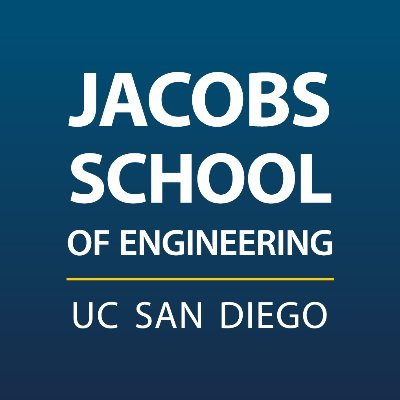News

May 18, 2010
Nineteen Projects Awarded Inaugural Calit2 Strategic Research Opportunities Grants
The first awards under a new research grant program at the University of California, San Diego will support a broad range of projects led by faculty members from 13 different departments and staff researchers participating in the California Institute for Telecommunications and Information Technology (Calit2). Full Story

April 20, 2010
Electrical Engineer Turned Solar Concentrator Inventor Wins Research Expo 2010
With his new solar concentrator design, electrical engineering Ph.D. student Jason Karp won the 2010 Rudee Research Expo Outstanding Poster Award. His winning poster “Planar Micro-Optic Solar Concentration” (#98) was one of 250 posters presented by Jacobs School graduate students on April 15th at the 29th Annual Research Expo at the UC San Diego Jacobs School of Engineering. Full Story

April 20, 2010
National Geographic Taps UC San Diego Students for Technology Solutions
A West Coast campus famous for its high-tech research is now becoming known for its global reach in cultural heritage. Faculty and students are already searching for the lost tomb of Genghis Khan and a masterpiece mural by Leonardo da Vinci not seen in 450 years, and now many more students will get the opportunity to blaze new technology trails in the name of global exploration. Full Story

April 14, 2010
Treat Acne with Coconut Oil and Nano-Bombs
A natural product found in both coconut oil and human breast milk – lauric acid -- shines as a possible new acne treatment thanks to a bioengineering graduate student from the UC San Diego Jacobs School of Engineering. On Thursday April 15, bioengineering graduate student Dissaya “Nu” Pornpattananangkul will present her most recent work on this experimental acne-drug-delivery system at Research Expo, the annual research conference of the UC San Diego Jacobs School of Engineering. Full Story

April 12, 2010
Hot Posters at Research Expo 2010 at the Jacobs School
The annual Jacobs School Research Expo features research posters by 250 M.S. and Ph.D. engineering students, technical breakouts led by Jacobs School faculty, a plenary session, and a reception where guests can interact with faculty and students who share their research interests. Full Story

April 1, 2010
Researchers Discover Weak Link in Alzheimer's Drug Candidates
Some current therapies being investigated for Alzheimer's disease may cause further neural degeneration and cell death, according to a breakthrough discovery by UC San Diego researchers. Full Story

March 29, 2010
UC San Diego Energy Dashboard to Help Campus Curb Appetite for Power
After an extensive period of testing, researchers have launched an Internet portal to showcase the real-time measurement and visualization of energy use on the University of California, San Diego campus. The UC San Diego Energy Dashboard (http://energy.ucsd.edu/) allows users to see up-to-the-second information on a structure-by-structure basis for 60 of the largest buildings on the La Jolla campus. Full Story

February 22, 2010
Jacobs School Leadership Affirms Principles of Community
Jacobs School Leadership Affirms Principles of Community Full Story

February 11, 2010
Catching Calcium Waves Could Provide Alzheimer Insights
New insights on what causes Alzheimer’s disease could arise from a recent discovery made by bioengineers from the University of California, San Diego. The finding concerns the infamous amyloid beta peptides (Aβ)—fragments of which form plaques thought to play a role in Alzheimer’s disease. Full Story

January 22, 2010
Jacobs School Diversity Organizations Win Award
Congratulations to the UC San Diego Jacobs School of Engineering’s undergraduate chapters of the National Society of Black Engineers, the Society of Hispanic Professional Engineers and the Society of Women Engineers. This trio of undergraduate engineering diversity professional organizations won a 2009 UC San Diego Equal Opportunity/Affirmative Action and Diversity Award. Full Story
